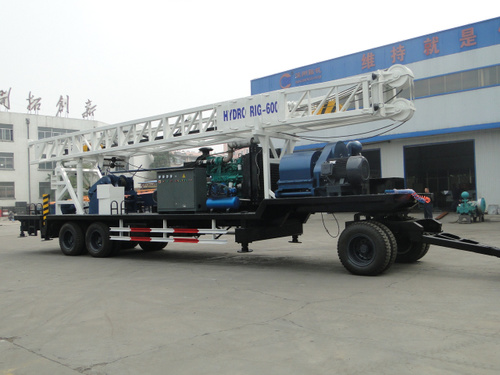The core parameters of water well drilling rigs mainly determine the performance, scope of application, and operational efficiency of the rig.
The following are the core parameters of the water well drilling rig:
1. Maximum drilling depth: choose the suitable depth according to the needs of the project. Deep well drilling rigs are usually used for drilling at a depth of more than 300 meters.
2. Rig power: The power level determines the drilling capability of the rig in complex geological conditions. Higher-power drilling rigs are suitable for drilling in hard rock formations and deep wells.
3. rotary torque: when the torque is larger, the drilling rig can drill in hard rock, clay and other complex formations and improve the drilling efficiency.
4. Drilling rate: The drilling rate is affected by many factors such as formation hardness, drill bit type, drilling rig power and so on. High-speed drilling is usually applied to soft soil layer, while the drilling rate of hard rock layer is slower.
5. Hydraulic System Parameters: A hydraulic system with high flow rate and high pressure can improve the operating efficiency of the drilling rig, especially to increase the torque of the drill bit and increase the drilling speed.
6. Wellhead diameter: Choosing the right wellhead diameter determines the purpose of the well. Smaller wellheads are suitable for domestic wells, while larger wellheads are suitable for large-scale water development or industrial water use.
7. Rig weight and maneuverability: Weight affects the stability and wind resistance of the rig, but it also affects transport and maneuverability. Lighter rigs are suitable for tight working conditions, and heavier rigs provide better stability and are suitable for more complex working conditions.
8. Type of power source: Diesel engines are suitable for areas with no power supply, while electric motors are suitable for areas with a stable power supply. Choosing the right type of power source affects the efficiency and cost of the rig.
9. Drill bit type: Choosing the right type of drill bit is directly related to drilling speed and efficiency. The hard rock layer needs a diamond drill bit or wear-resistant alloy drill bit, while the soft soil layer can use a common alloy drill bit.
10. Circulation method: The circulation method directly affects drilling efficiency, borehole cleanliness, and formation protection. Different formations and project requirements may require different circulation methods.
Conclusion
When choosing a water well drilling rig, the above core parameters must be considered comprehensively according to the project's depth requirements, geological conditions and operating environment.
If you don't know how to choose the right water well drilling rig, click the link below to contact our professional team directly.

Comments
Post a Comment